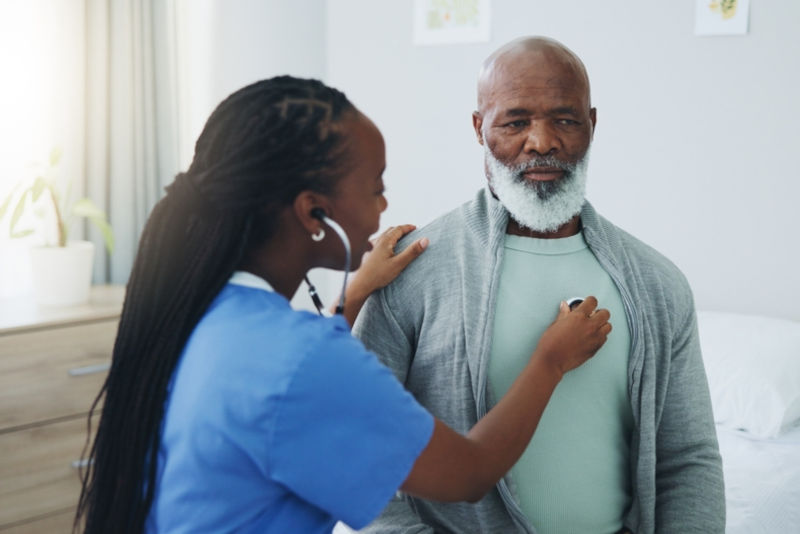
As leaders and researchers in the healthcare industry, nurses are expected to know how to develop and implement care plans for patients. These plans are based on a nursing diagnosis, and they work to ensure continuity of care for patients among different providers. But how do nurses evaluate patients in a way that is consistent, scientific, and evidence-based?
They start with a multi-step tool called a health assessment.
Health assessments serve more than one purpose, and learning how to perform a health assessment is an essential part of nursing education. This standardized information-gathering technique is one of the primary tools nurses use to evaluate patients and create a personalized treatment plan that promotes quality of life, keeps patients safe, minimizes risks, and enables continuity of care.
Everyone will at some point be a patient who needs a health assessment—and every nurse needs to understand how to perform one. Let’s go over some reasons why health assessments are performed in nursing, the steps nurses use to perform health assessments, and the crucial role of health assessments in promoting individual and community health.
Why are health assessments important?
In nursing, a “health assessment” refers to a comprehensive patient evaluation that identifies current health issues and conditions to watch out for in the future. Health assessments are typically performed by registered nurses (RNs) in healthcare settings like hospitals, outpatient offices and emergency care environments. The health assessment process often starts with the paperwork from providers that patients fill out at check-in—but the process of gathering information about a patient’s overall health extends into the examination room and continues with each interaction a nurse has with the patient.
Health assessments can be performed at a routine wellness check-up, as part of a new patient evaluation when admitted to the hospital, before a medical procedure, to fulfill a health insurance requirement, or to manage chronic disease—among many other reasons.
Health assessments are important for patients for three primary reasons. First, they can be used to identify what’s happening in the body at this current moment in time, be that an acute infection, a traumatic injury, or a flare-up of a chronic condition. Second, the comprehensive history portion of the health assessment may identify physical and social determinants that lead to the condition which may be important to modify in the treatment plan. Third, the tool also provides perspective on what could happen in the future based on lifestyle choices, the patient’s family history, current medications, allergies, and other risk factors.
Health assessments also serve the community at large, often referred to as a community assessment. The demographic information from community health assessments help health providers and other stakeholders understand the needs and challenges faced by other people who have things in common. Preventative care initiatives, patient education, and policy development are all informed and guided by health assessment compilations.
When nurses perform a health assessment, they take a structured approach. That means they perform the same steps, with the same method, in the same order, with every patient. This standardizes their collection of a patient’s health information to ensure a comprehensive and consistent health assessment that can be objectively analyzed and interpreted.
How is a health assessment performed?
A health assessment has several steps. Some steps are simply a matter of asking questions. Other steps are more intensive and require diagnostic procedures. The steps can also vary according to why the health assessment is being performed and the setting —be that a doctor’s office, wellness clinic, hospital, or other healthcare facility.
The basic steps are as follows:
- Collect a comprehensive medical history from the patient. This can include filling out paperwork or answering questions verbally. Medical history questions relate to family history, past medical conditions and surgeries, current medications and allergies, lifestyle choices like smoking and alcohol use, and any current symptoms that the patient is experiencing.
- Review of symptoms. The third step reviews each system of the body to detect any additional symptoms that the patient has not yet expressed. Questions about the respiratory system (“Having any trouble breathing?”), the gastrointestinal system (“Any nausea lately?”) and the neurological system (“Are you having headaches?”) may be used. Additional diagnostic testing may need to be ordered or requested. A nurse may also ask questions about mental health.
- Perform a physical evaluation on the patient. This involves inspecting the patient’s body for swelling or other abnormalities, palpating (feeling) the skin’s surface to detect lumps or tenderness, auscultating (listening) to the heart and lungs with a stethoscope, and taking vital signs like temperature and blood pressure.
- Documentation. The nurse records all the relevant information shared by the patient to create a record that is clear, comprehensive, and accurate.
- Analysis and diagnosis. All the collected data is then analyzed according to the nurse’s clinical expertise. A nursing diagnosis and/or problem list based on the health assessment may be used to decide on a treatment plan, discuss with other providers, or educate the patient on their risk factors for various health conditions.
How do nurses learn how to do a health assessment?
Nurses learn to perform health assessments as part of specialized coursework in nursing school. They are taught in the classroom (or virtual classroom) setting before they practice in a skills lab with peers, simulated patients, or high-fidelity simulators. Once they have grasped the basics of health assessment techniques, they can hone their skills with real patients as part of the nursing clinical hours requirements.
Nurses who have a Bachelor of Science in Nursing have extensive coursework and fieldwork covering health assessments during their nursing education. In a distance/online accelerated BSN program (ABSN), nurses are often required to complete at least one in-person campus residency where they practice health assessment techniques.
Why choose Holy Family to pursue your Accelerated BSN if you already hold a bachelor’s degree?
If you already hold a bachelor’s degree in another field and want to become a registered nurse (RN), an ABSN might be your best option. The rigorous accelerated program at Holy Family University Online leverages your previous education so that you can complete your nursing coursework in as little as 14 months.
The Second Degree BSN program at HFU is more affordable than many other programs in the Philadelphia area, and it requires only five prerequisite courses (compared with competitors, who typically require eight or nine). Coursework can be completed 100% online, and Holy Family provides placement support to help you find immersive clinical sites. A brief in-person campus residency at Holy Family helps you establish rapport with your fellow nursing students as you work together to get started in an exciting, in-demand career.
Click here to learn more about what Holy Family University has to offer!

